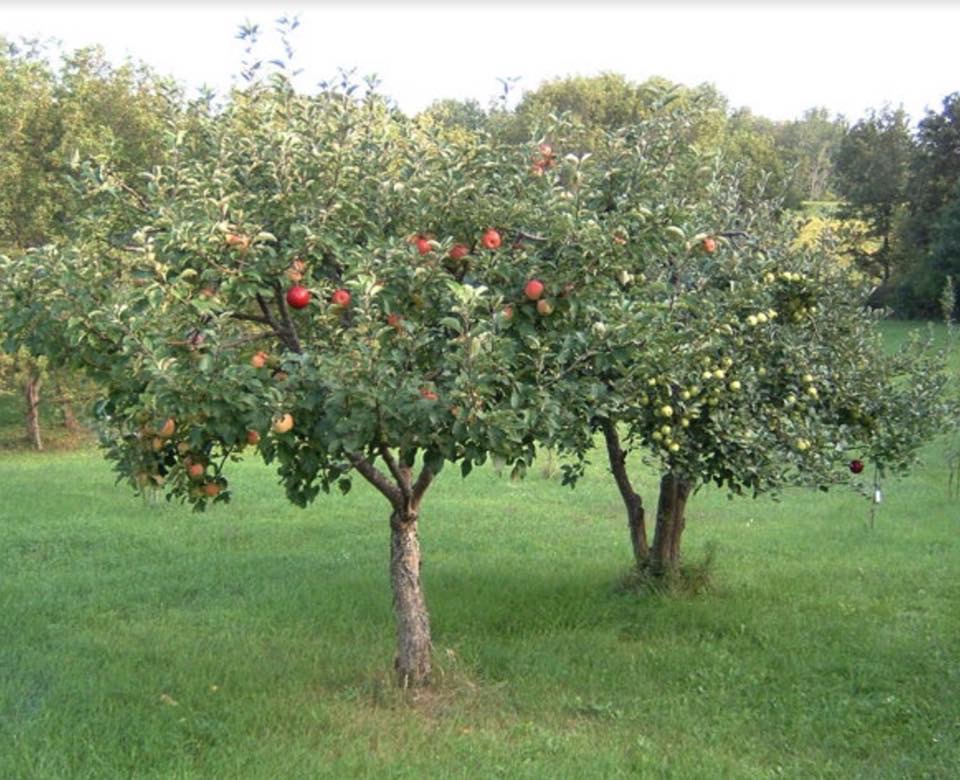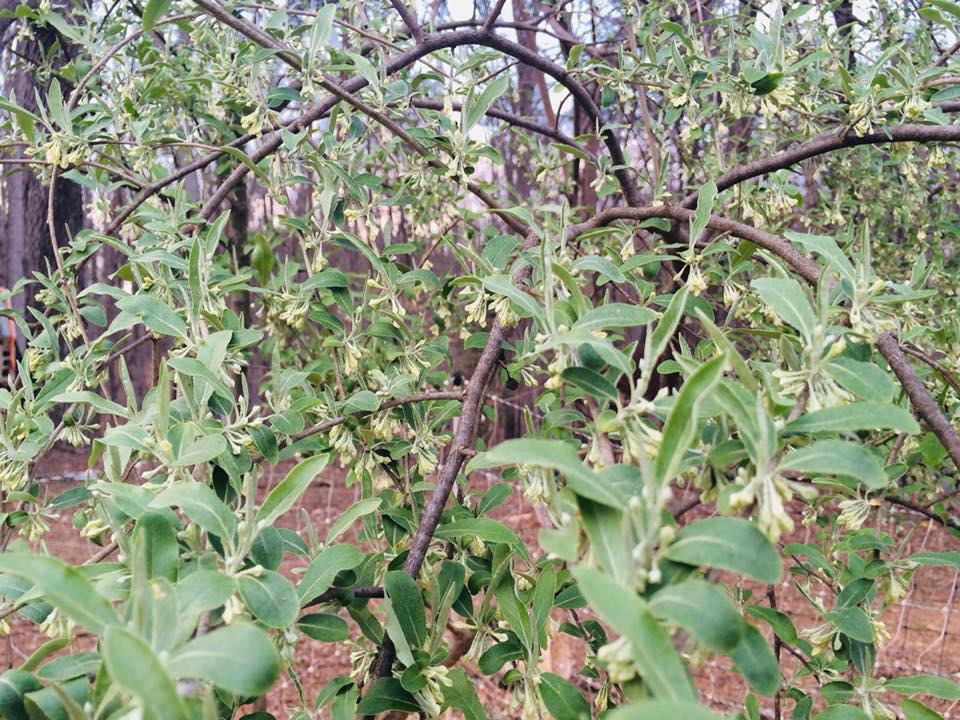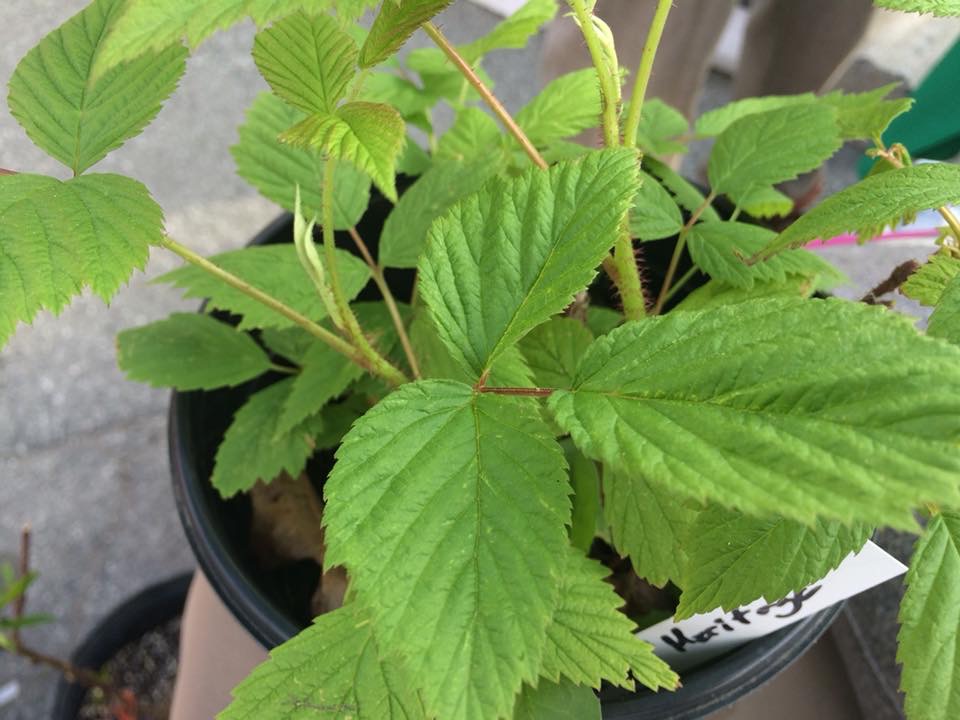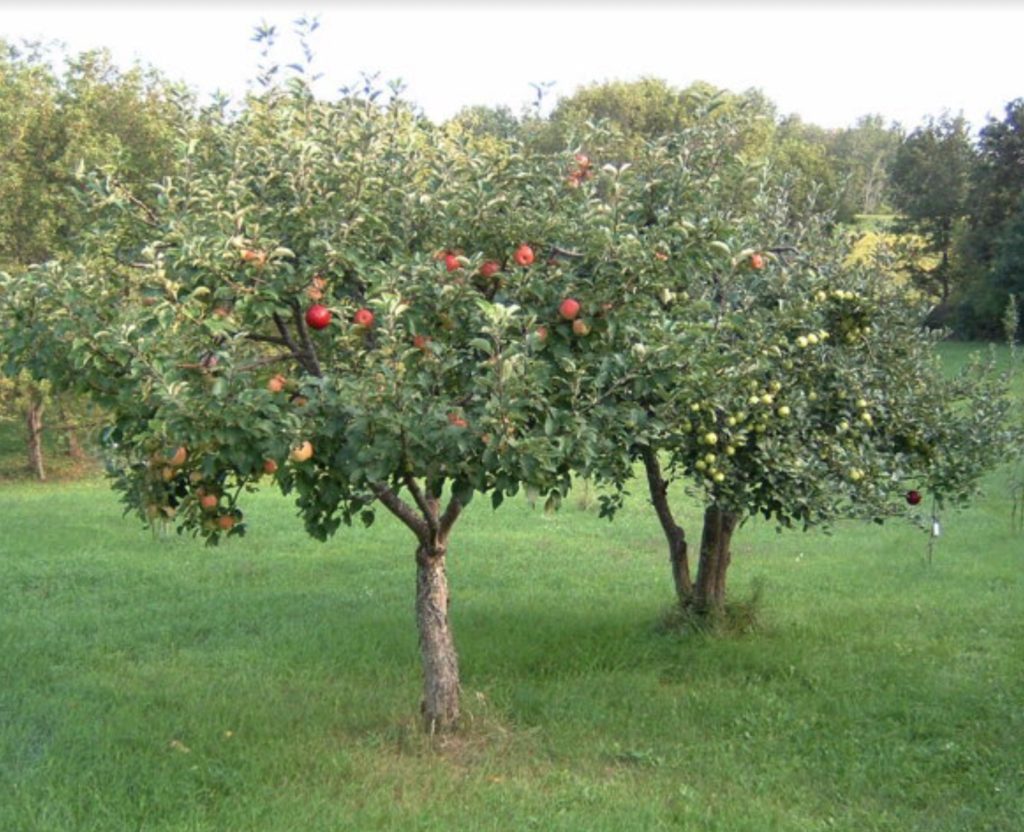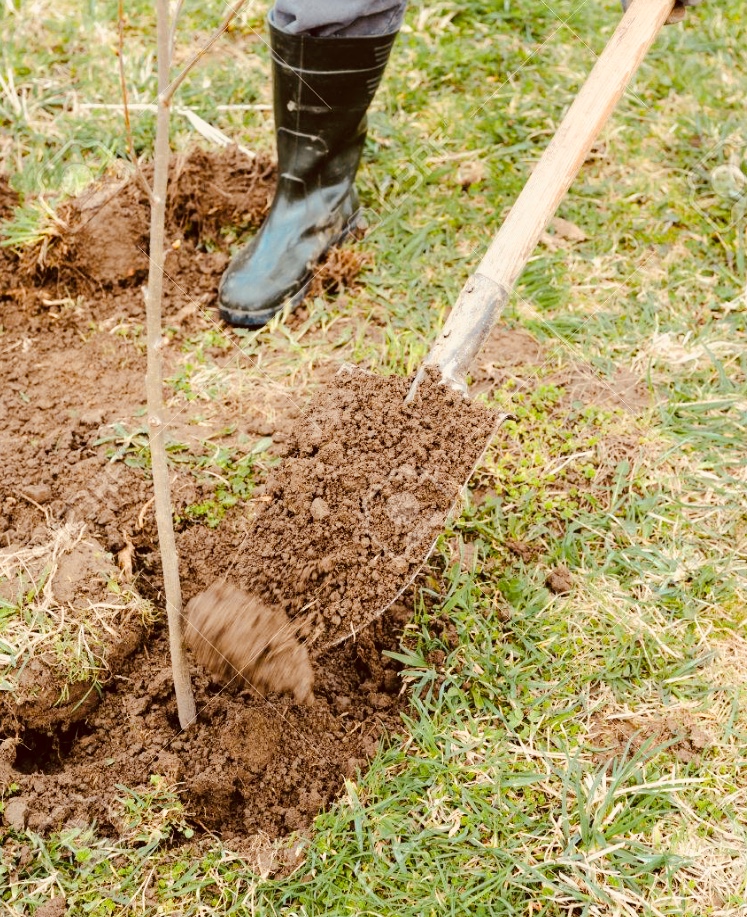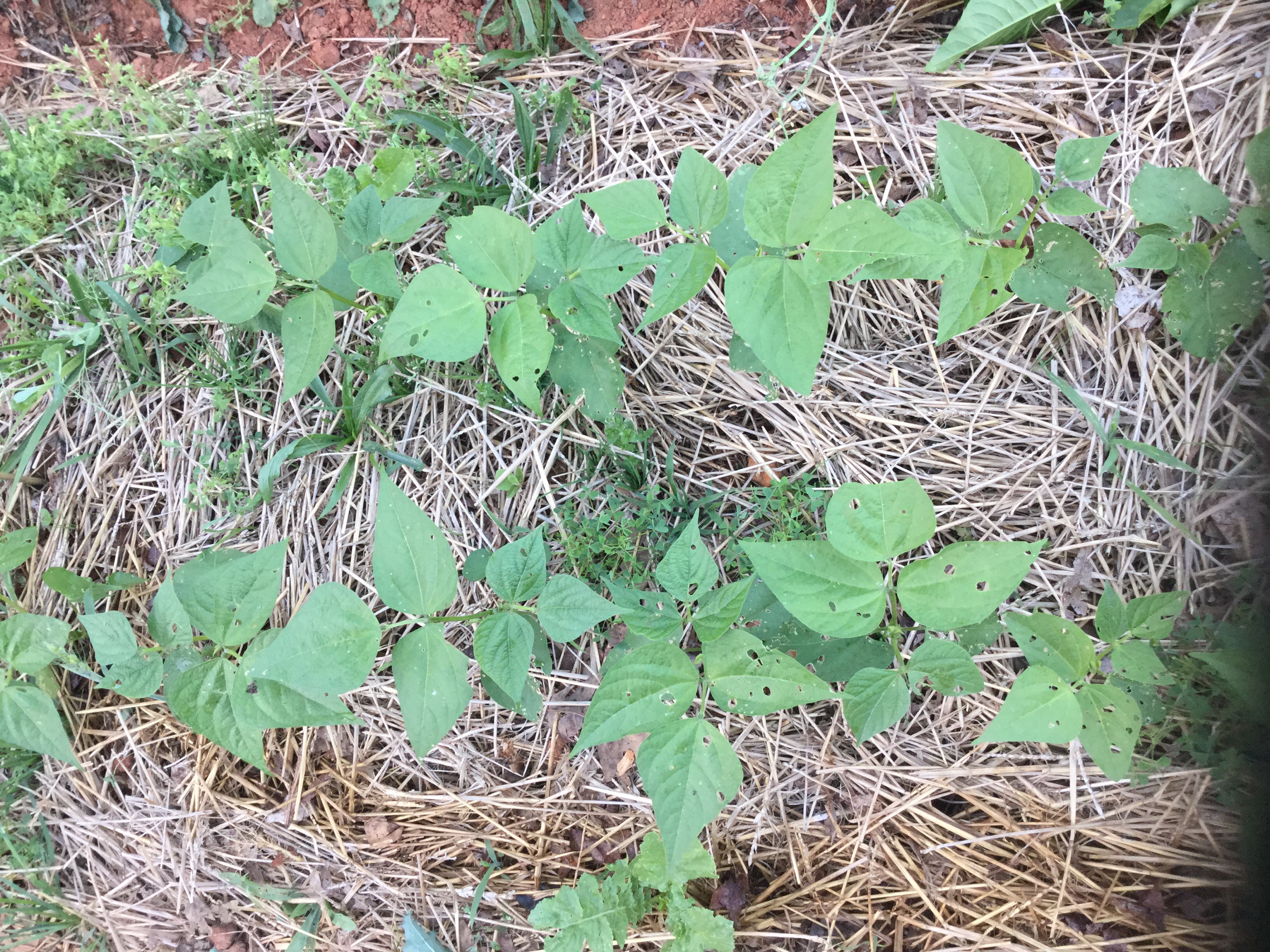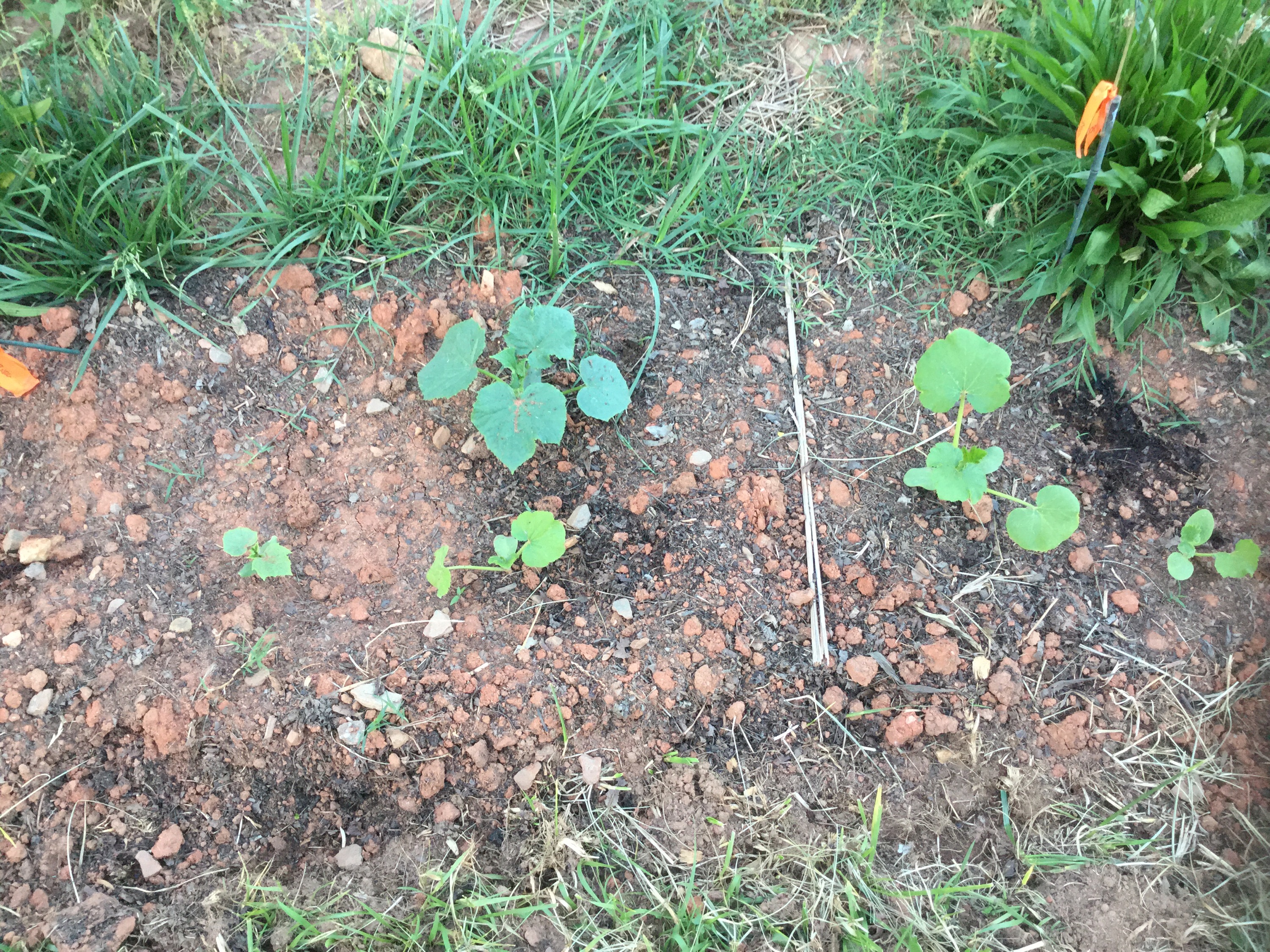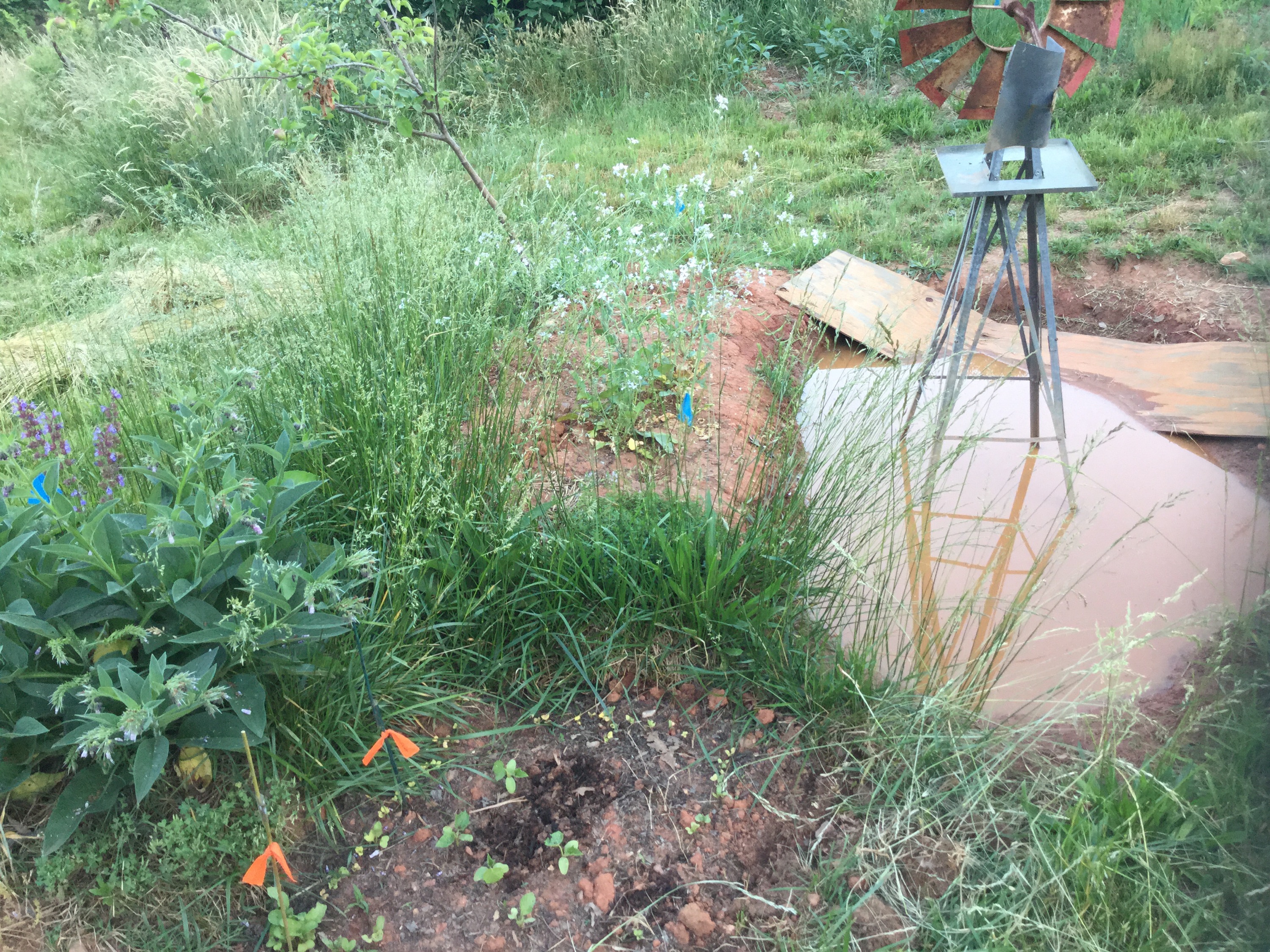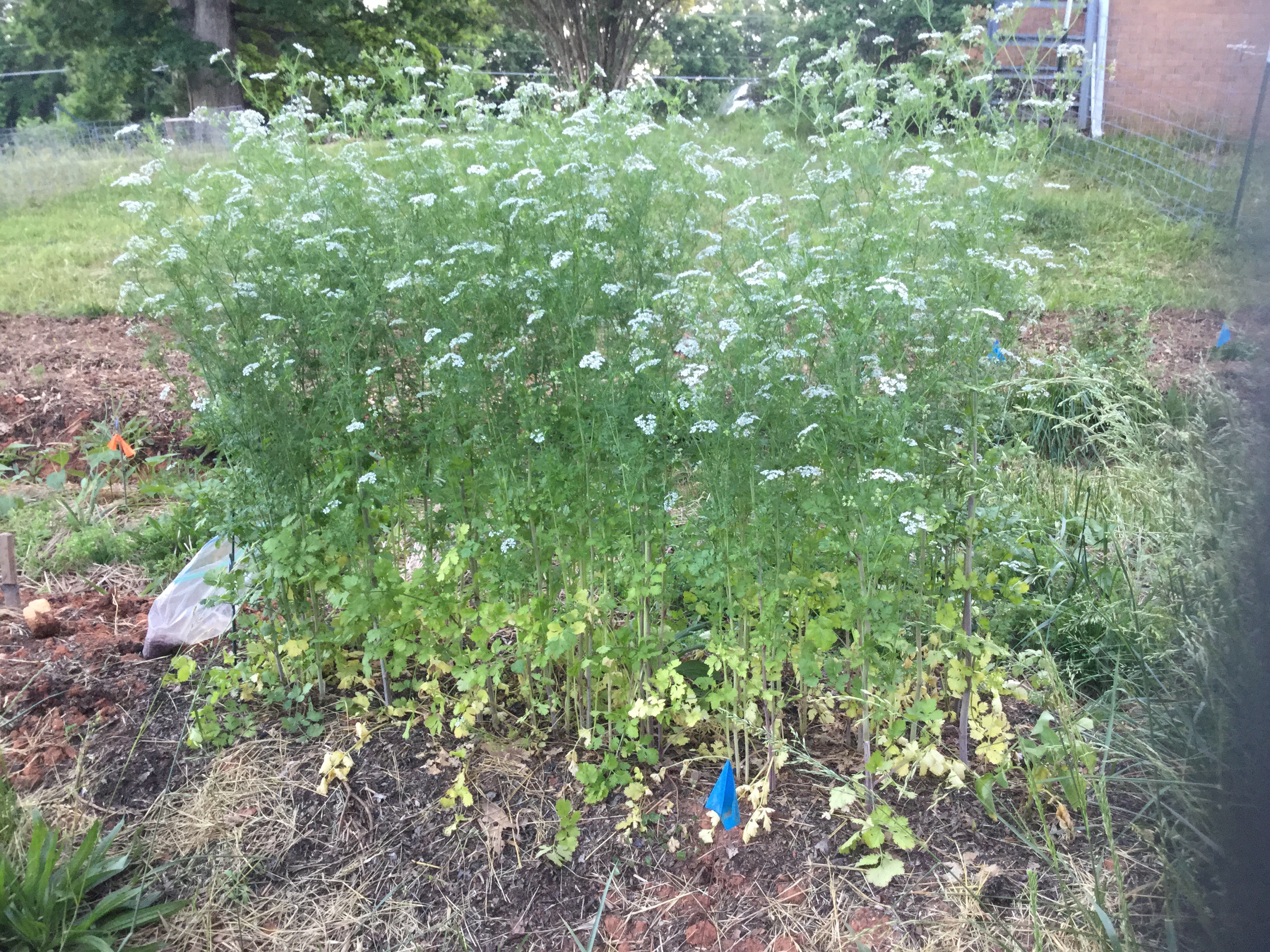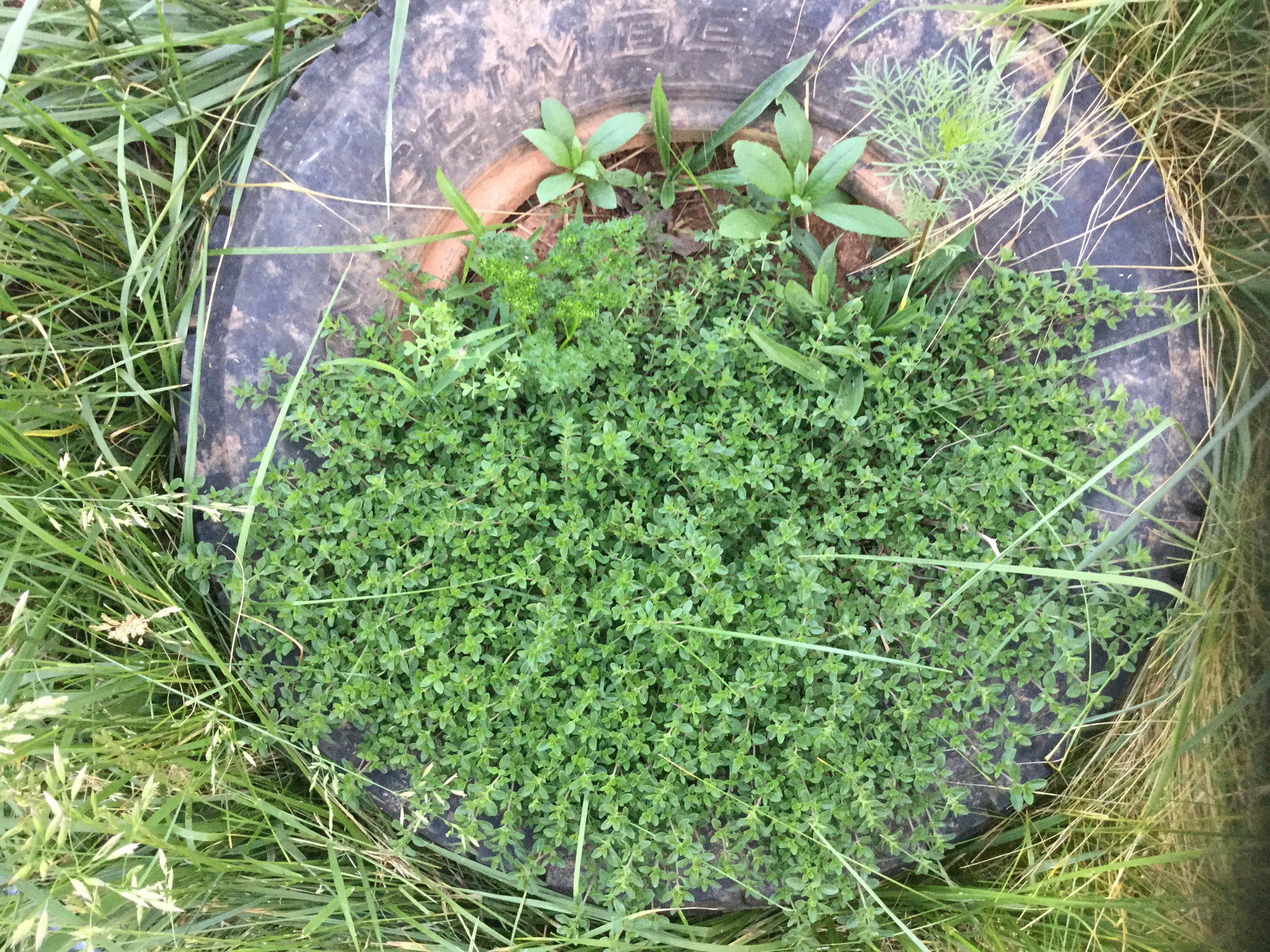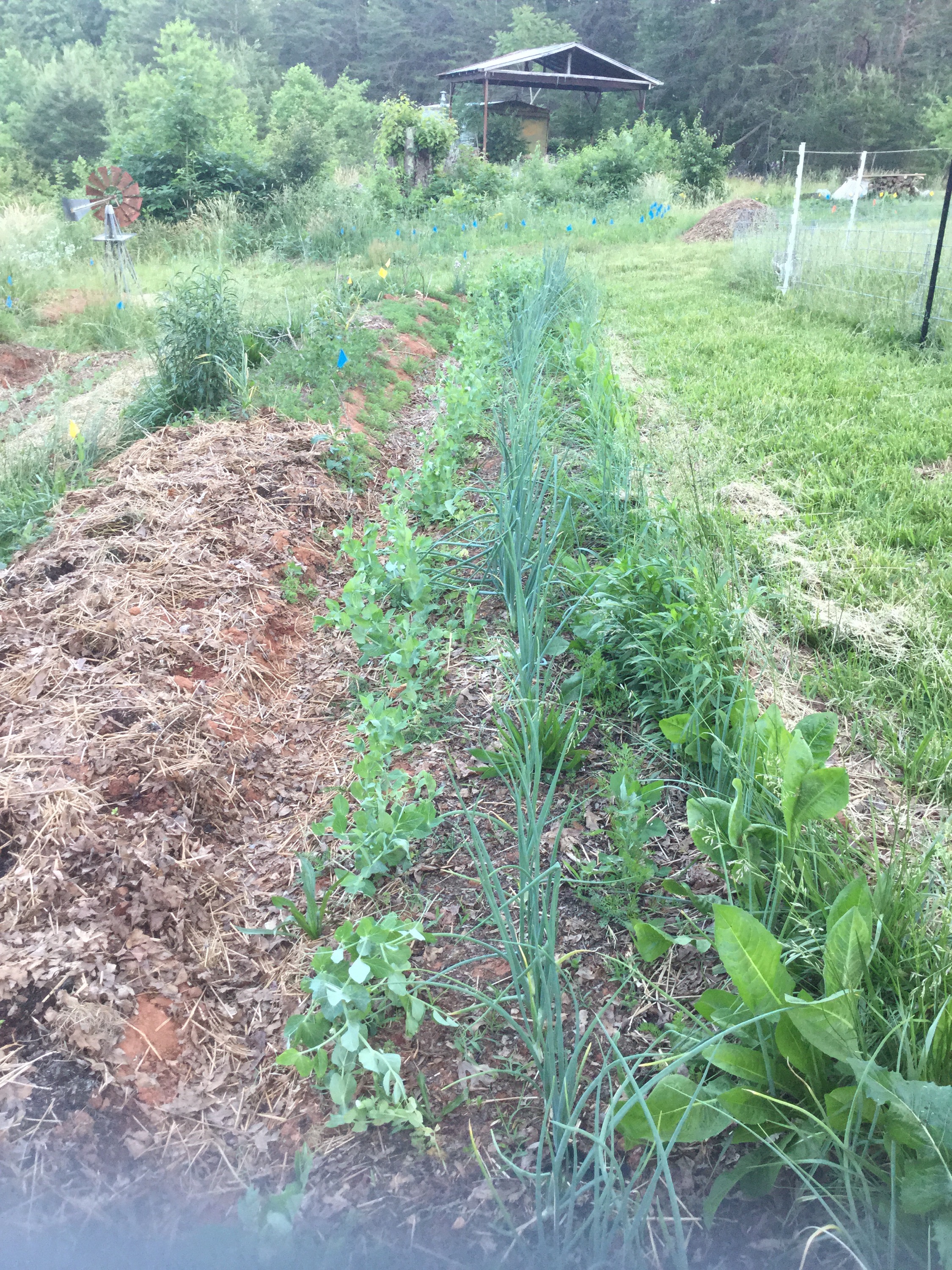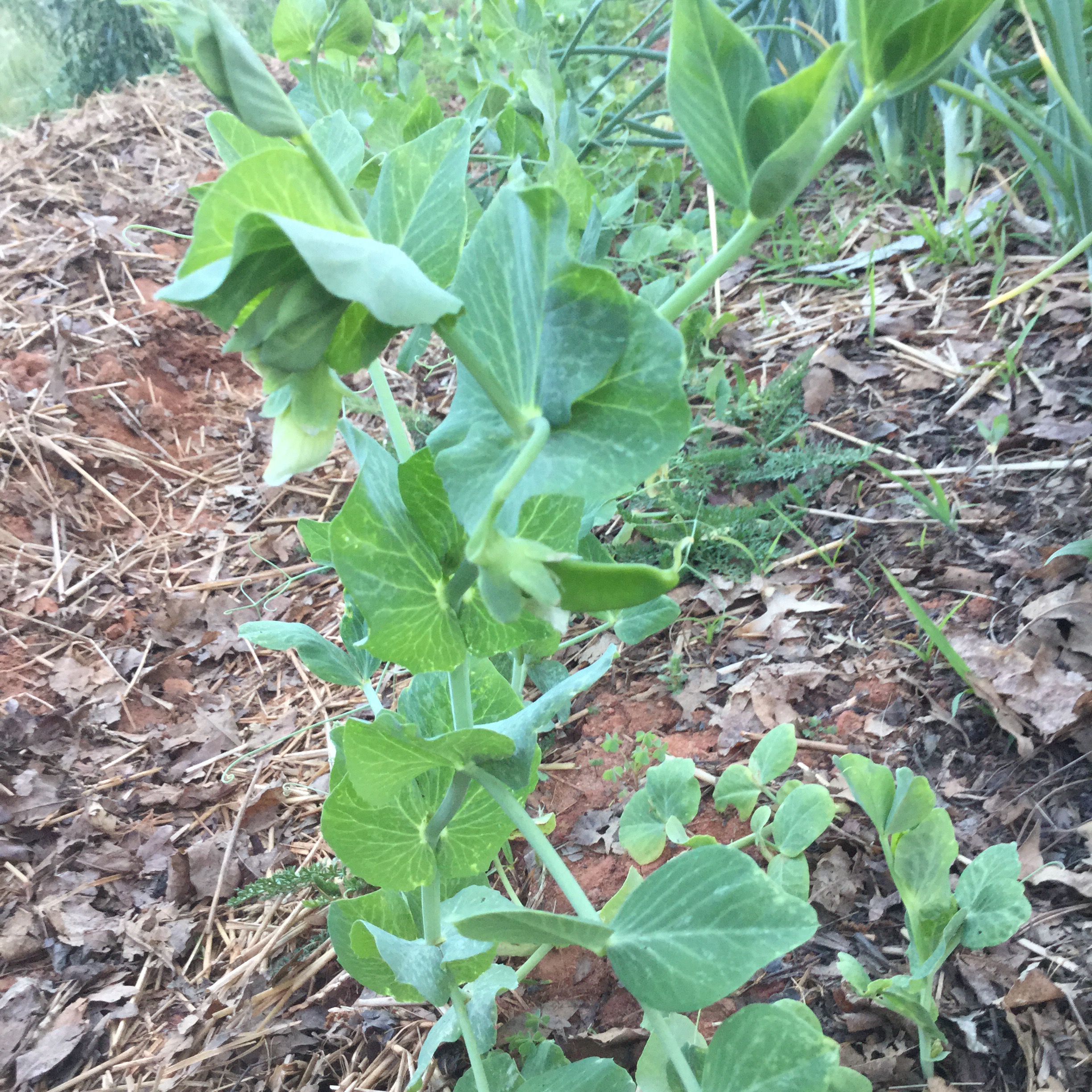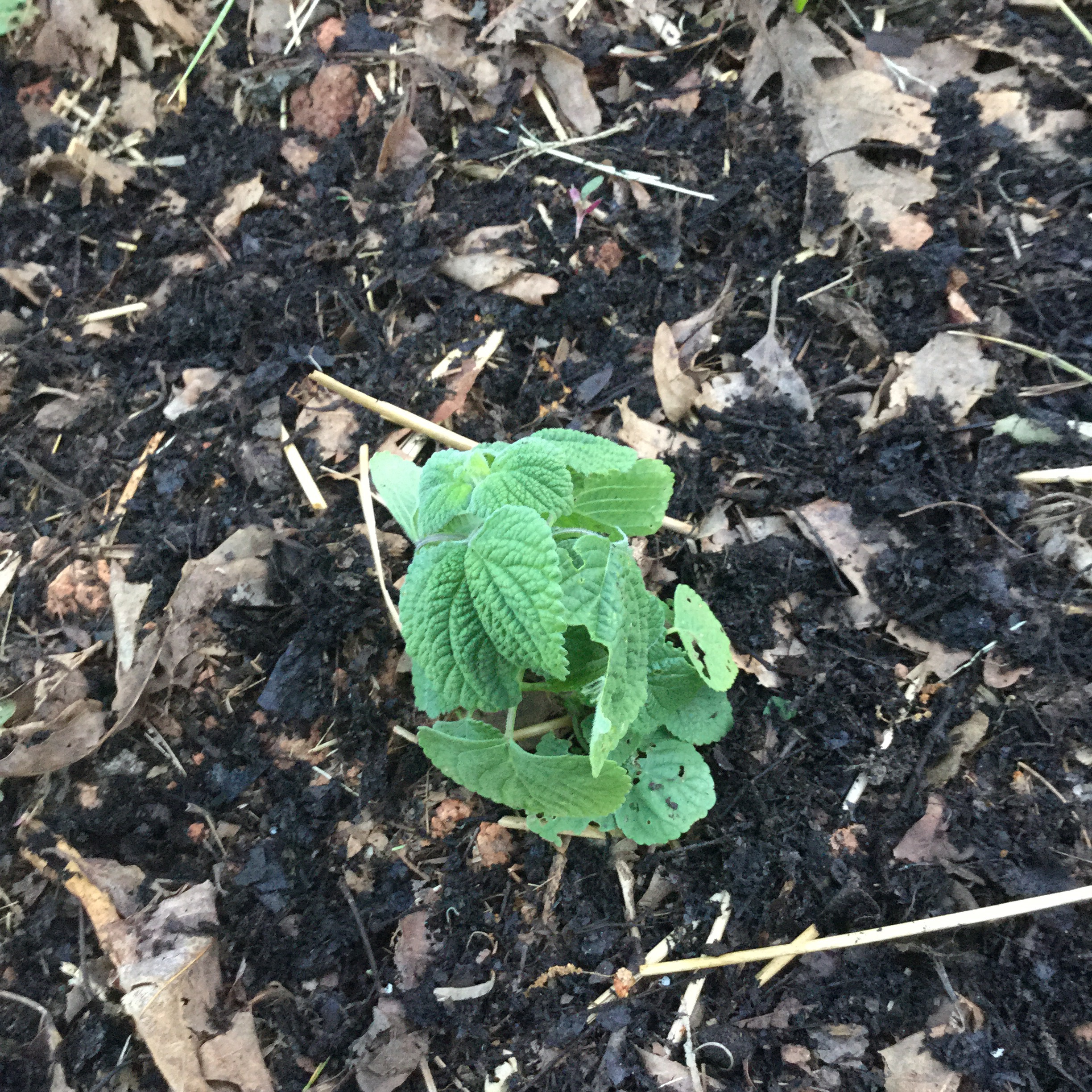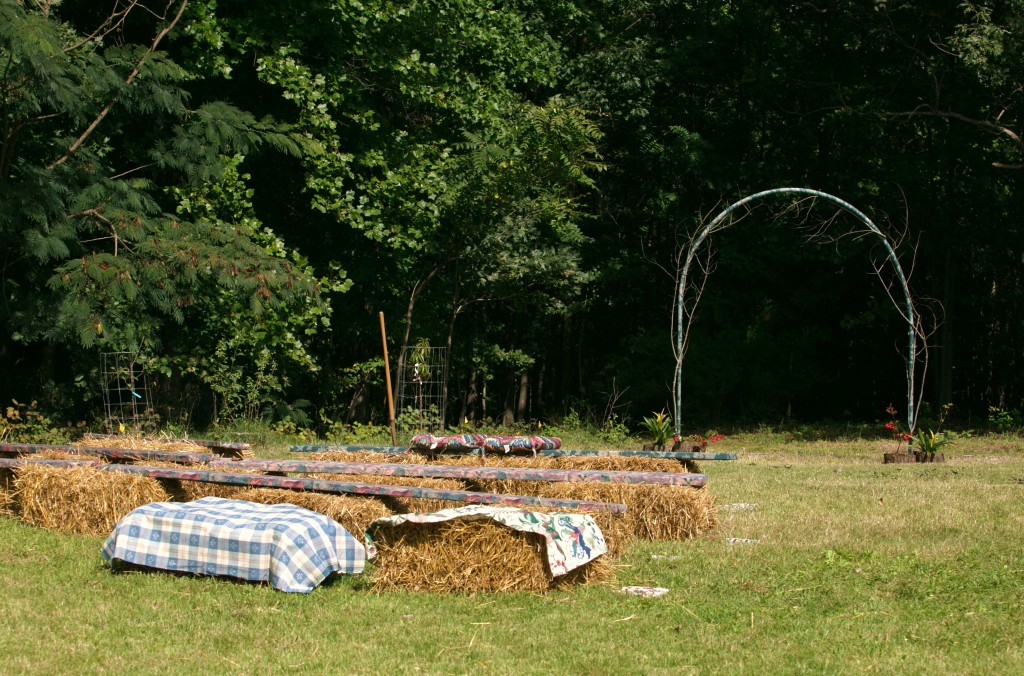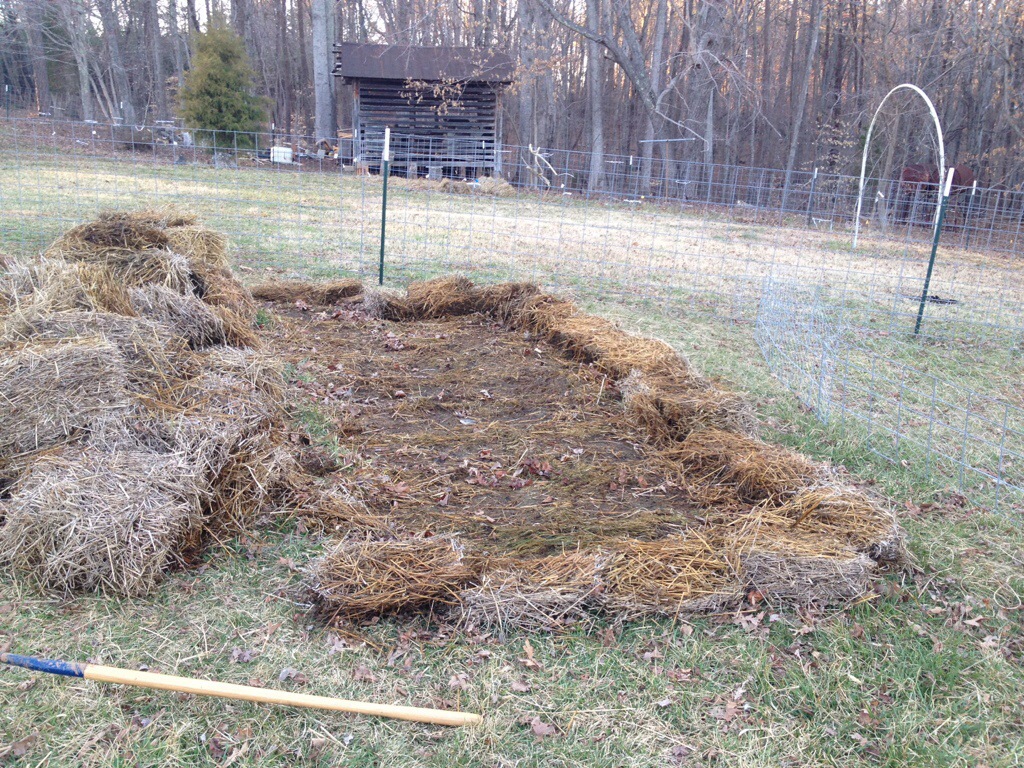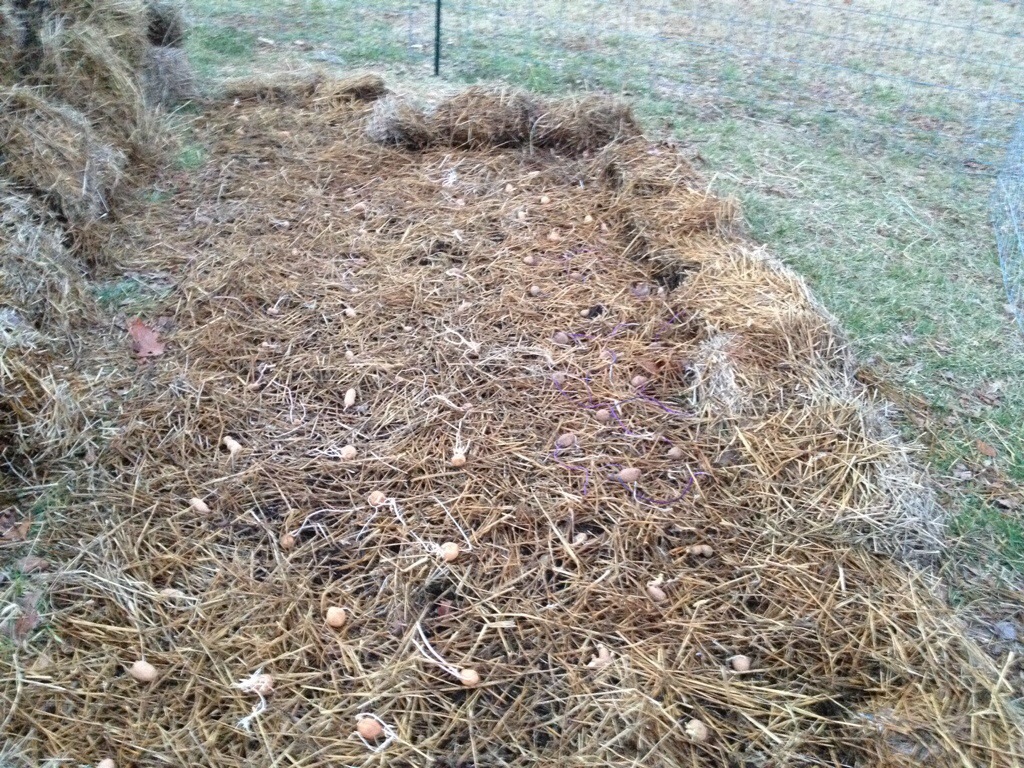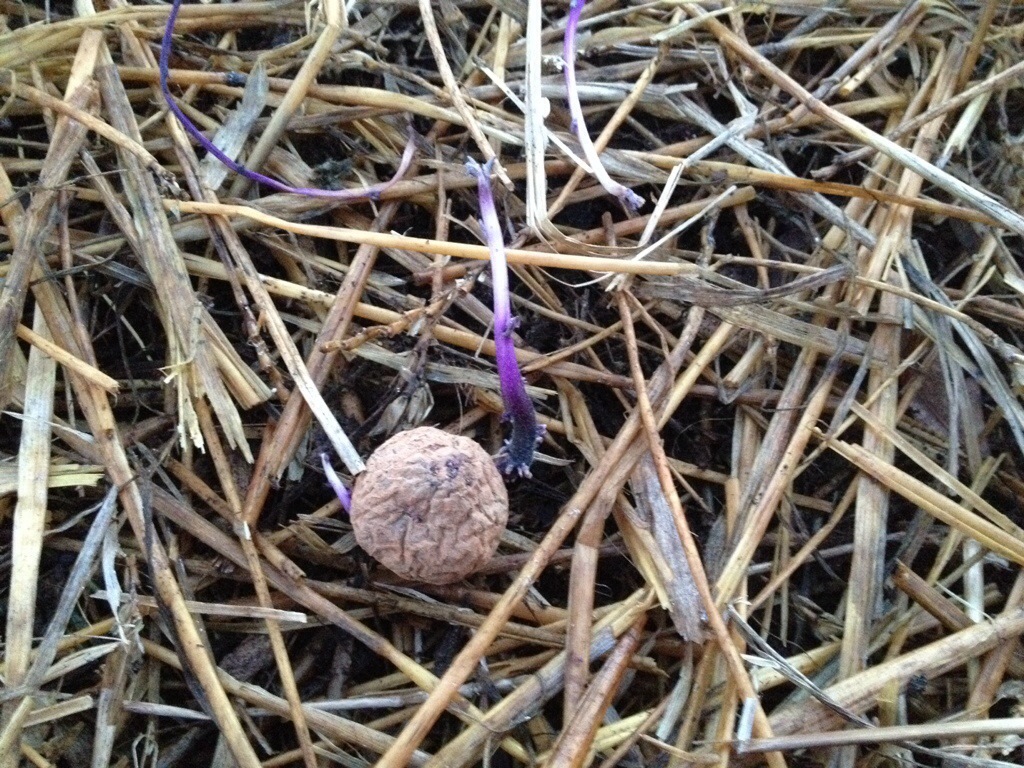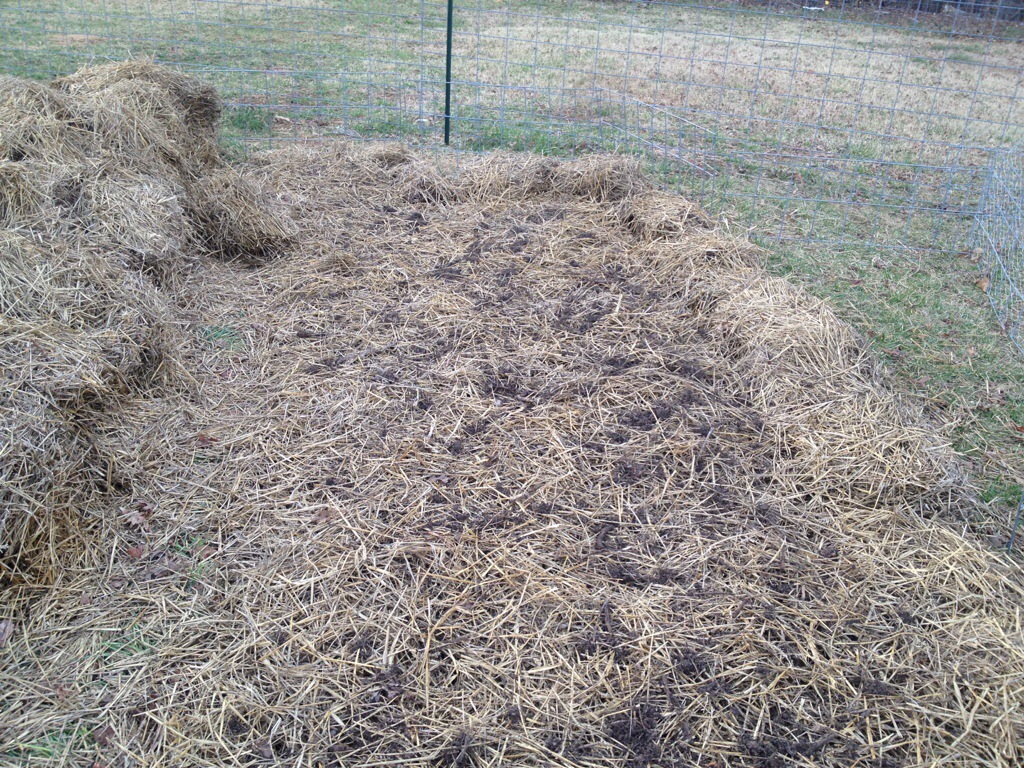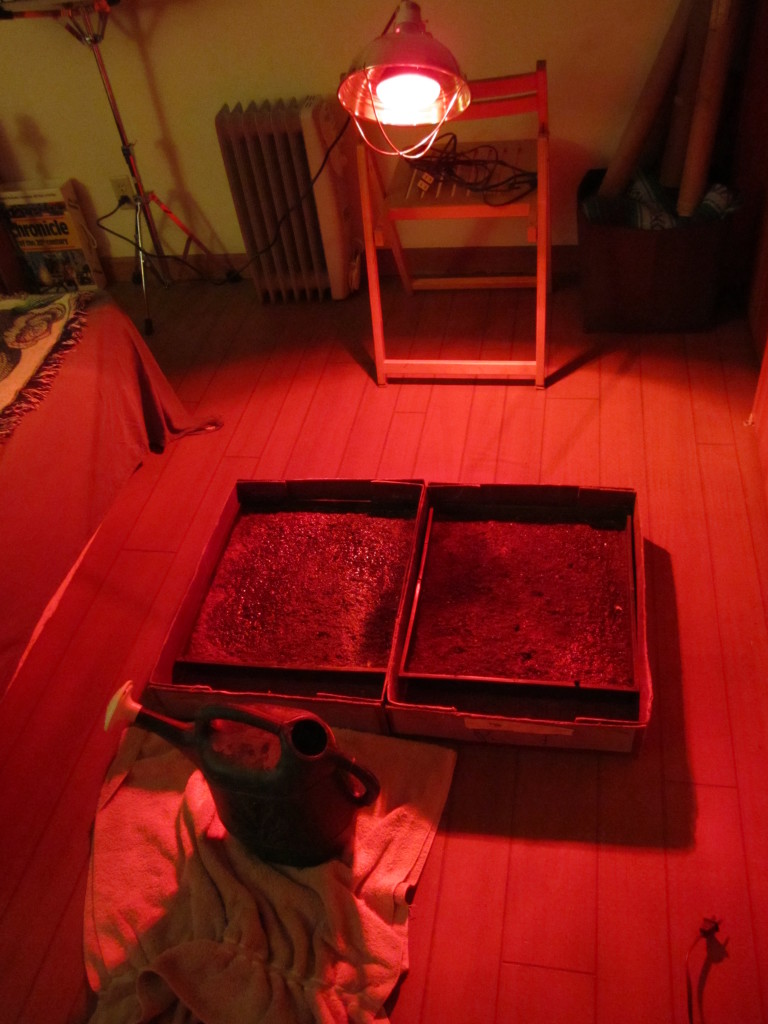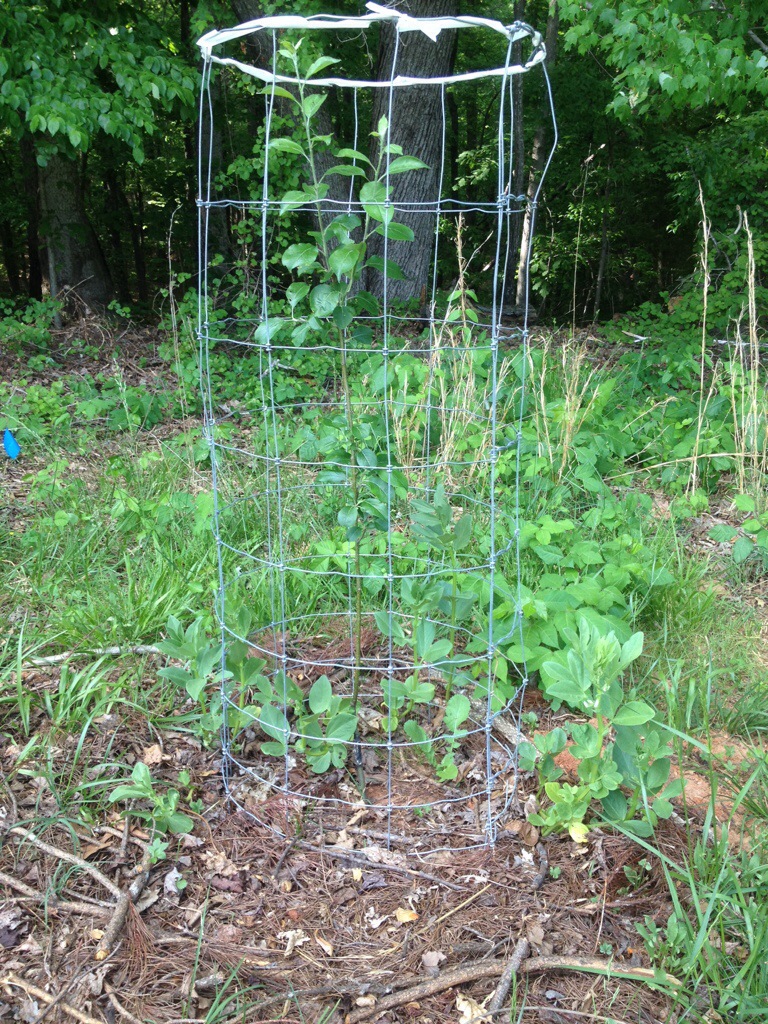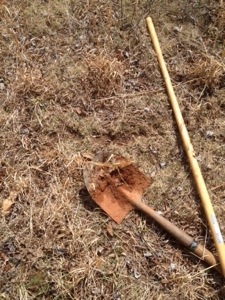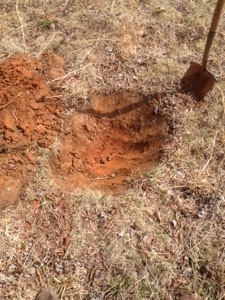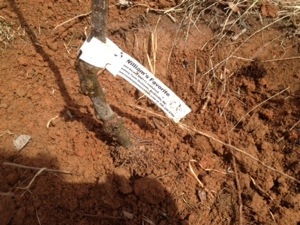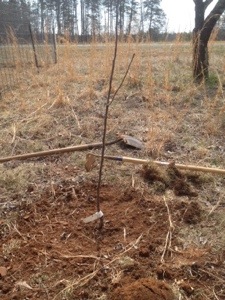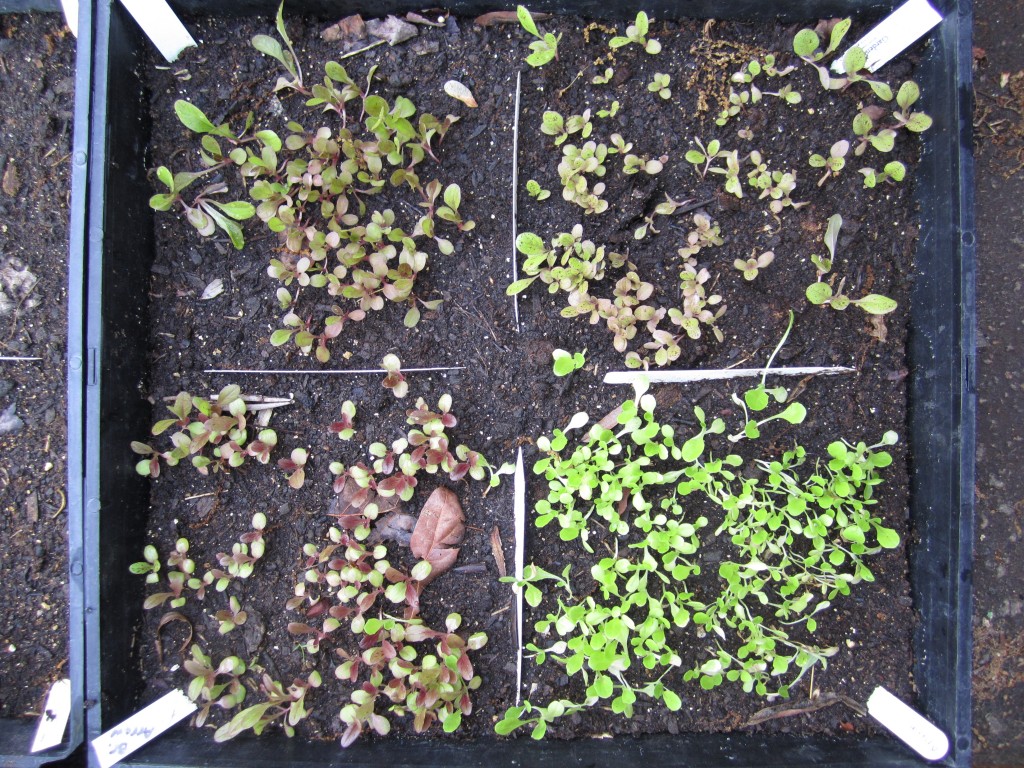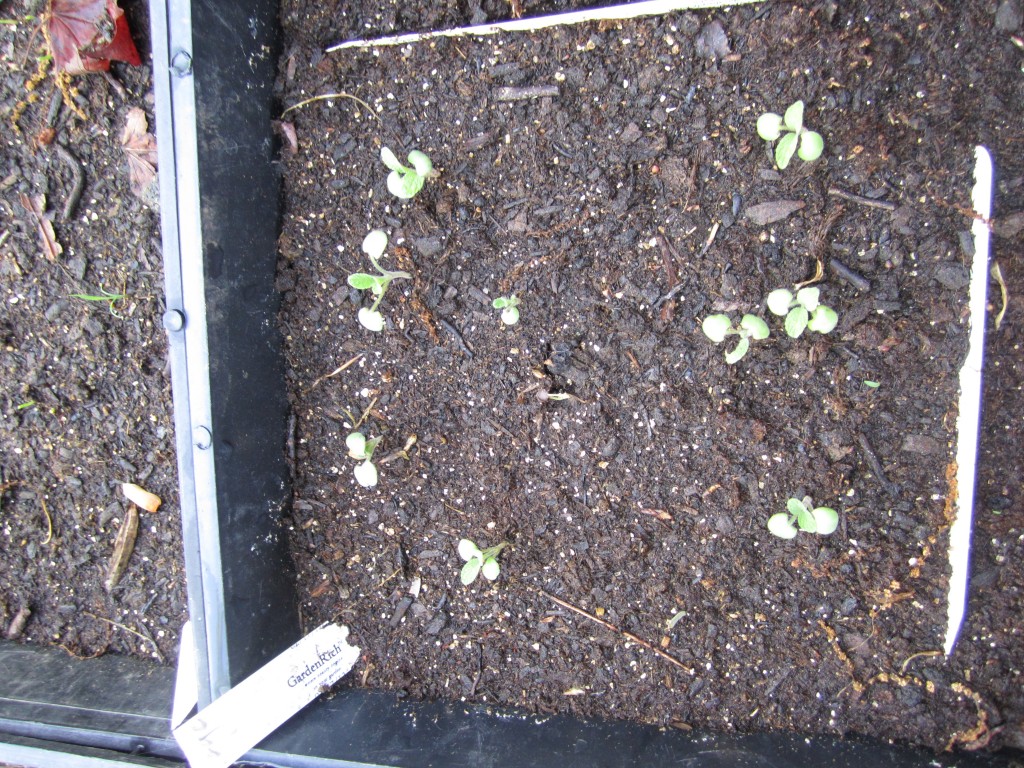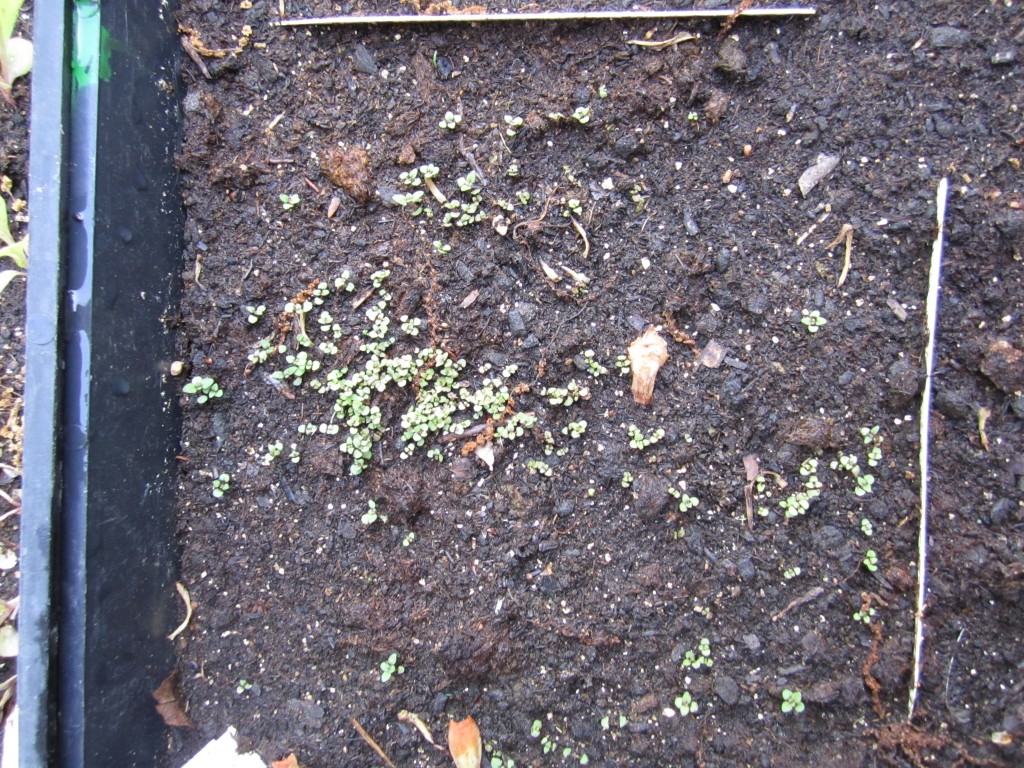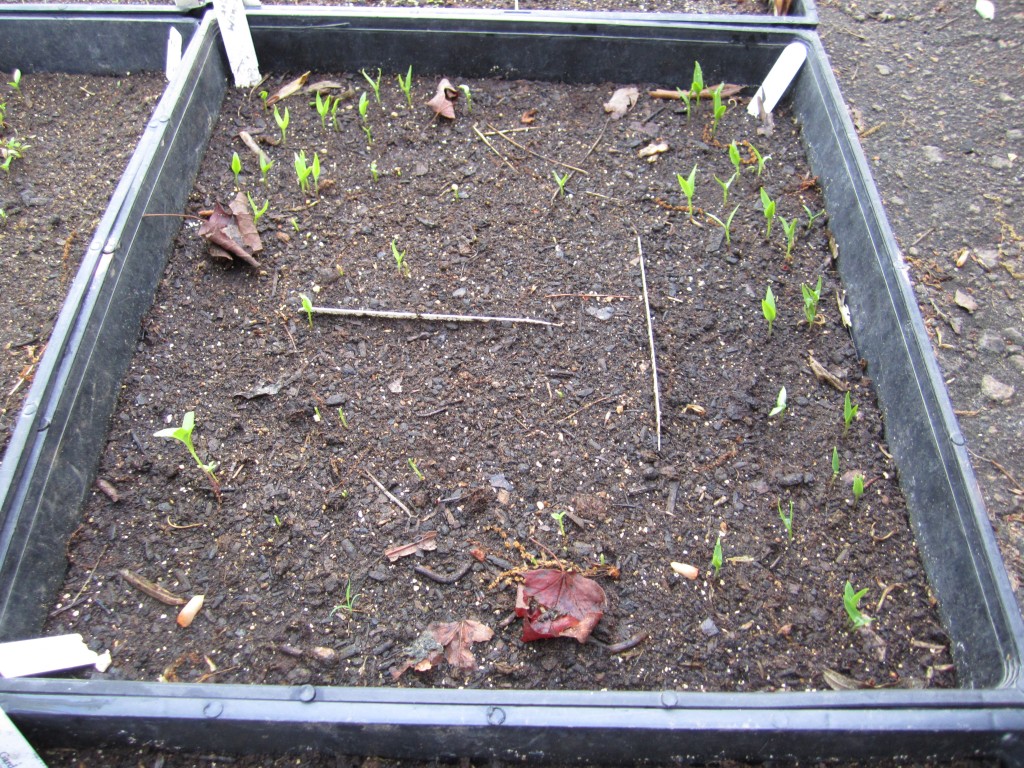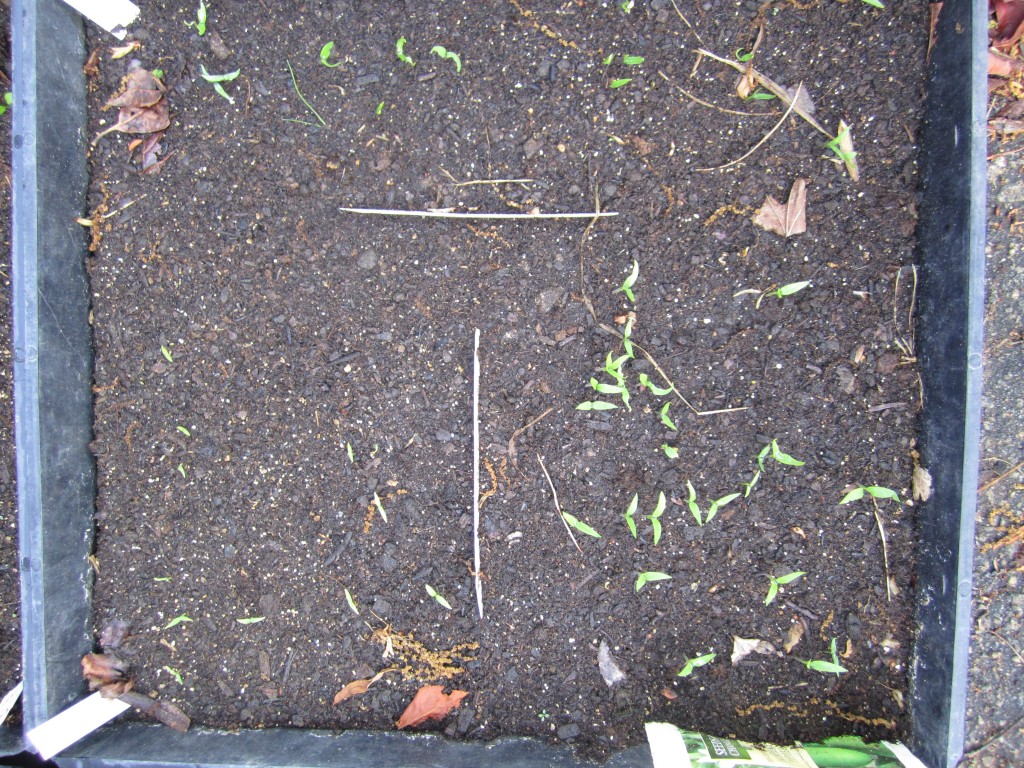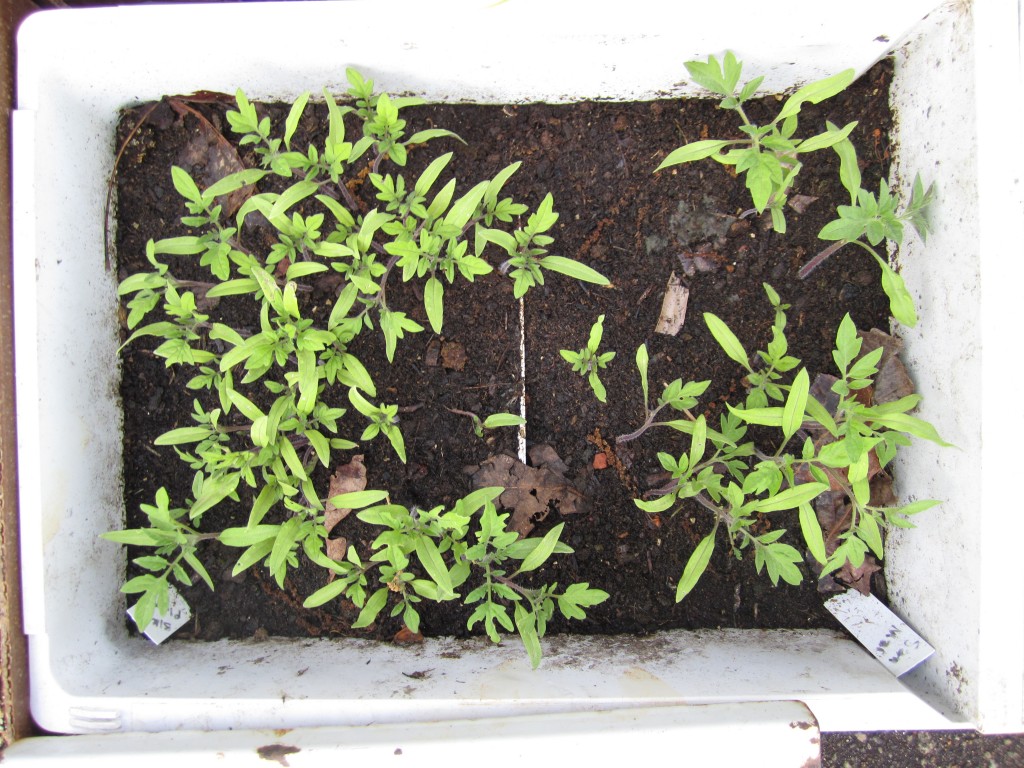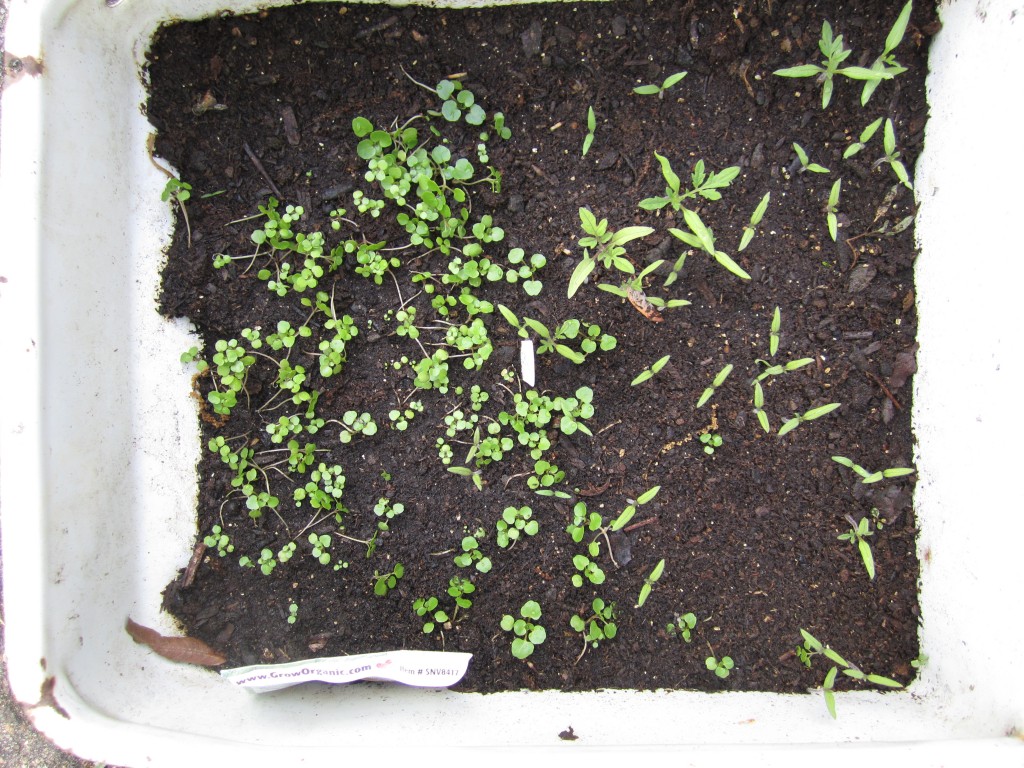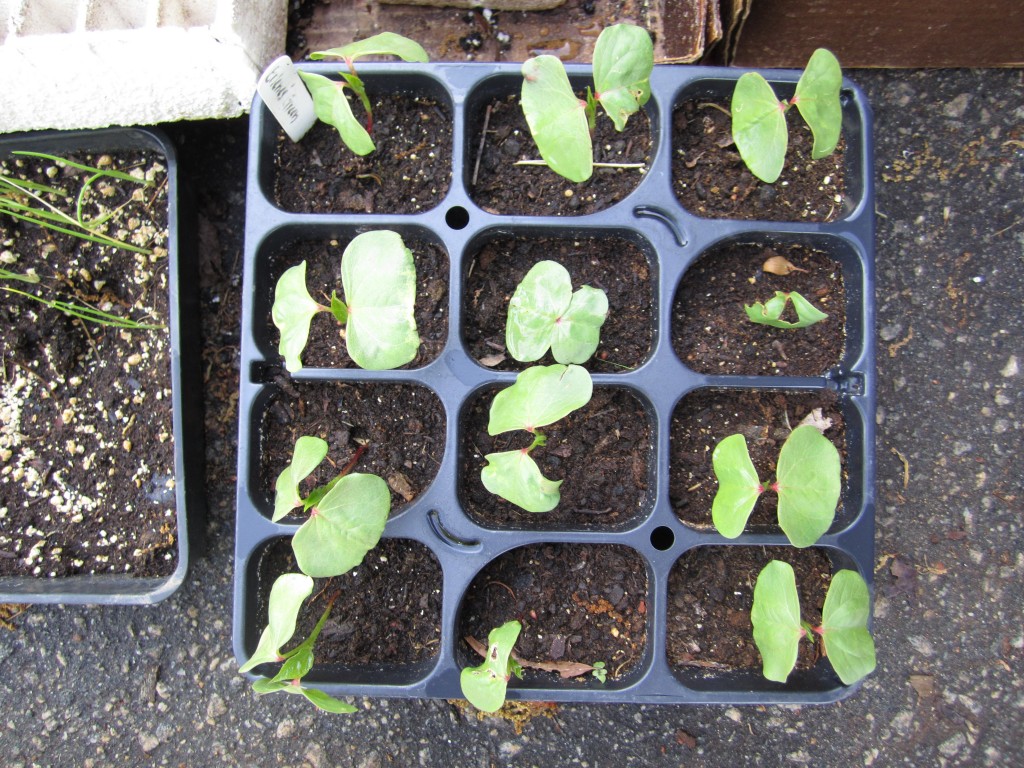Over the past few weeks Emma and I have been busy planting over 100 trees, vines, bushes and shrubs as the foundation for our new food forest. A food forest, for those who may never have heard the term before, is a forest designed to provide food for its stewards. They often consist of perennial species, like fruit and nut trees, and are therefore inherently stable and resilient.
A well designed and established food forest is able to cycle nutrients, capture energy, and produce a yield with few human inputs, such as irrigation, fertilization, and planting. Our food forest will take some time to reach this mature, self supporting state, and for now we will have to nurture our young plants to ensure that they become well established and provide for us for decades to come.
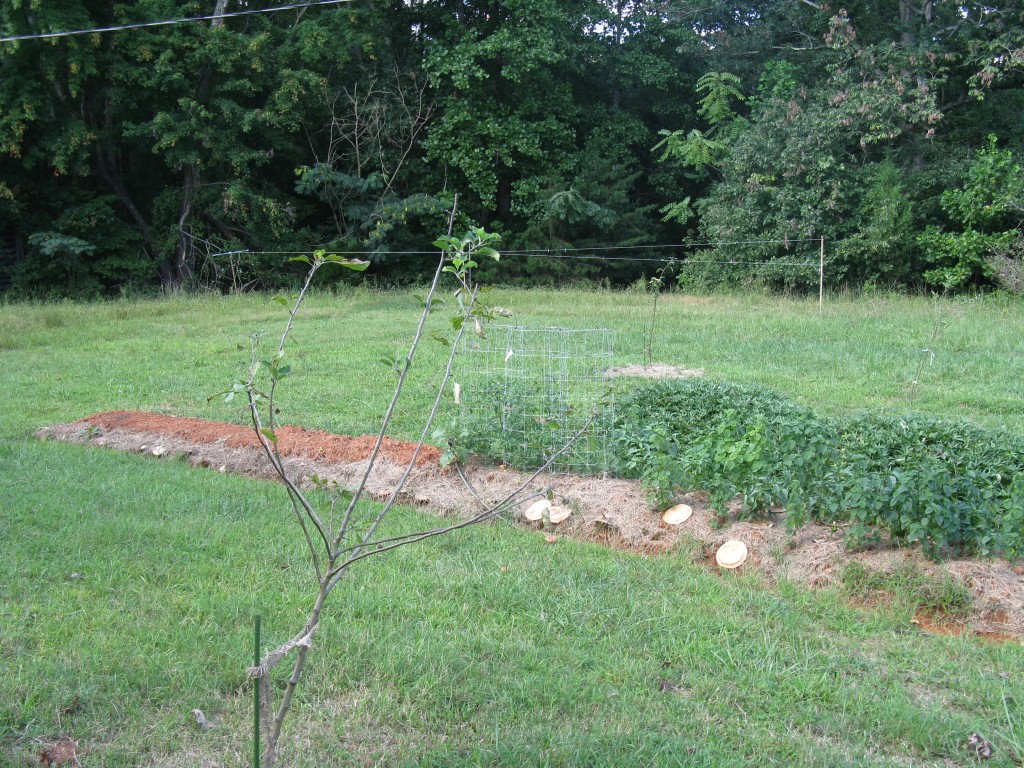
Last year, the forest edge, the location of our new food forest, was an impenetrable tangle of small trees and shrubs.
This longevity is one of the key benefits of forest gardening. There are food forests that are over 2000 years old which have provided for many generations of humans caretakers. This is what we are shooting for. Designing a system that will feed not only us, but our progeny for years and years.
Our new food forest is only the home base for our future plans, and is located right outside our back door, in, what in permaculture is referred to as zone 1 or zone 2. The backyard area forms a u shaped, open glade that faces south, and is bordered by native woods made up of oaks, poplar, hickory, maple, and pine among others.We are expanding out from this hardwood forest with our fruit trees, replacing the shrubby undergrowth, and following the curved shape of the woods. This was a conscious design choice and has numerous advantages.
First, we replaced many undesirable and inedible species with productive species. As anyone who has ever walked into a forest knows, the edge is usually where you encounter the thickest undergrowth of thorny bushes and vines that seem impenetrable.
Second, by planting along the forest edge we, and our plants, are able to tap into the complex and well developed fungal network that supports and coexists with our woods. Plants usually prefer to grow in 1 of 2 environments.The first is a bacterial one that is primarily found in grasslands, meadows, and prairies. These environments rely on grazing animals to digest large amounts of plant material and poop out partially decomposed manure that is full of bacteria that complete the nutrient cycle from plant-animal-plant.
The other is a fungal environment, where moist, and shady conditions, as well copious amounts of woody material support millions of miles of fungal hyphae, that break down dead wood, help tree roots obtain and take up nutrients in the soil, and act as a sort of internet that connects the trees in a forest. Thus, by planting our trees on the edge of the forest, their roots are able to seek out the fungal network that forests and woody trees depend on to thrive.This is much easier than having to establish this fungal network from scratch by mulching with woody material, or trying to establish a fungal based system in the middle of a bacterial environment, like a lawn.
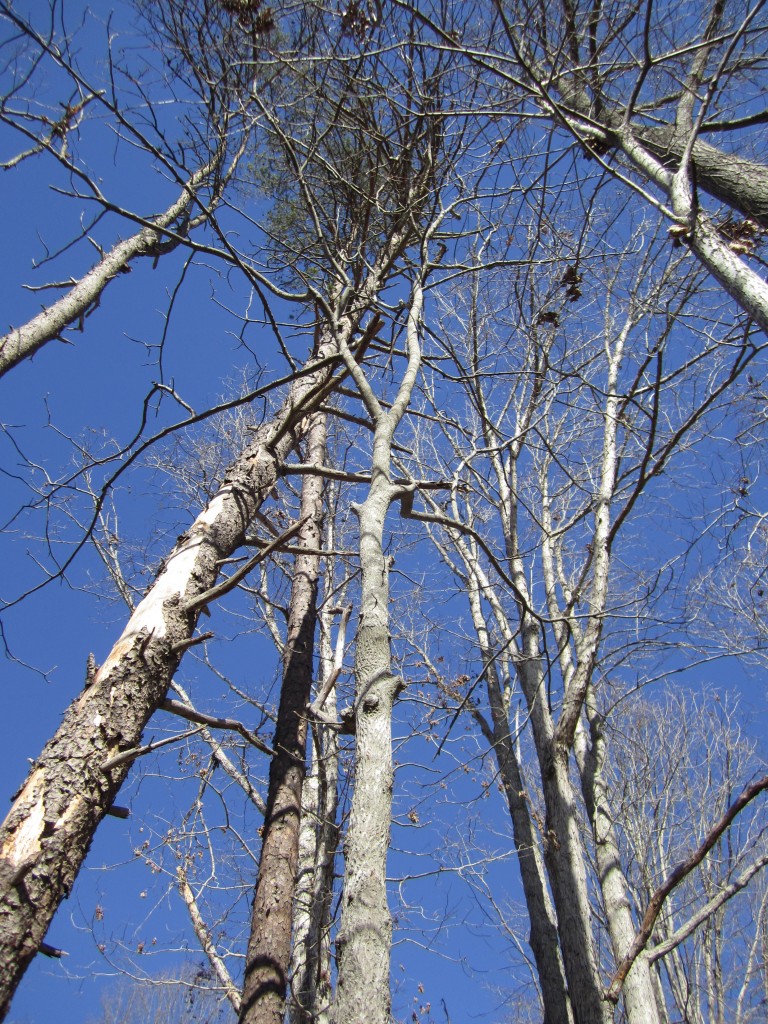
forest systems rely on fungal networks to cycle nutrients , maintain balance, and grow large trees
Third, in addition to tapping into the fungal network of the forest, our new food forest will benefit from the established nutrient cycle that is already in place. Our towering hardwood trees have roots that have driven deep into the soil, and are able to pull up nutrients and minerals unavailable to most plants. They then store these nutrients in their leaves, and when fall comes, shed huge amounts of organic fertilizer and mulch all around our young food forest.
In addition to gathering and cycling nutrients, these massive trees are also able to soak up and “sweat” out water. This dew will fall directly on top of our new food forest, supplying it with a decent amount of moisture and reducing our need to irrigate.
All of these benefits are part of the reason we planted our food forest on the hardwood forest edge. Because the mature system can provide so much for our new, immature system, we won’t be planting as many support species. There will be some, but no where near as many as would be planted in a typical food forest.
This diverse forest system will be made up of an extremely diverse group of fruiting and medicinal plants. In addition to the overstory of hardwoods (which also provide shade and moisture for our mushroom logs), we planted apple, pear, peach, pluot, plum, paw paw, cherry, and asian pear trees as the main food species. We then planted shrubs and bushes like raspberry, blackberry, blueberry, currants, gooseberries, seaberry, autumn olive, goumi, goji berry, aronia, and elderberry. We also planted a few vines, like groundnut, grape, and passionflower, as well as herbaceous species like sunchokes, comfrey, fava beans, and, soon, a dozen more medicinal, perennial herbs like black cohosh, astragalus, marshmallow, yarrow, and valerian. Among these will be nitrogen fixers like honey locust, black alder, and siberian pea shrub, as well as a mix of clovers.
All of these species are in an area smaller than an acre, and primarily along the border. Most are perennial, and should provide for food for many years, as well as serve as nursery stock for propagation, ans the expansion of our food forest to other spaces on our property. It has taken a great deal of effort to plan and plant, but our new food forest should start paying dividends in a few years, and then on for as long as there is someone here to harvest.
